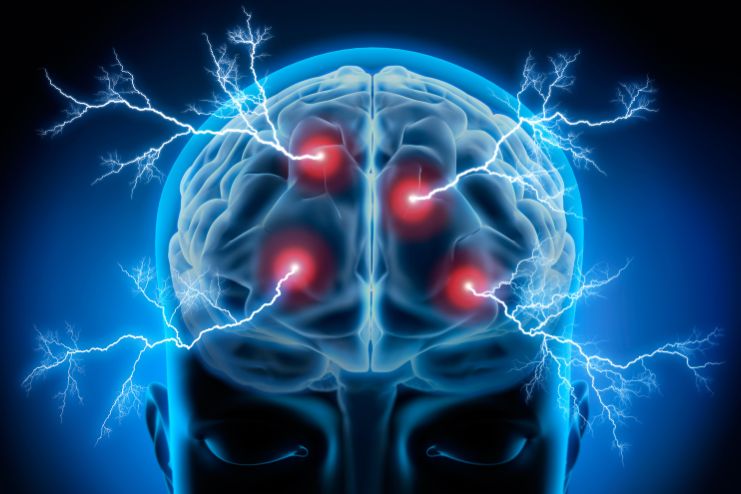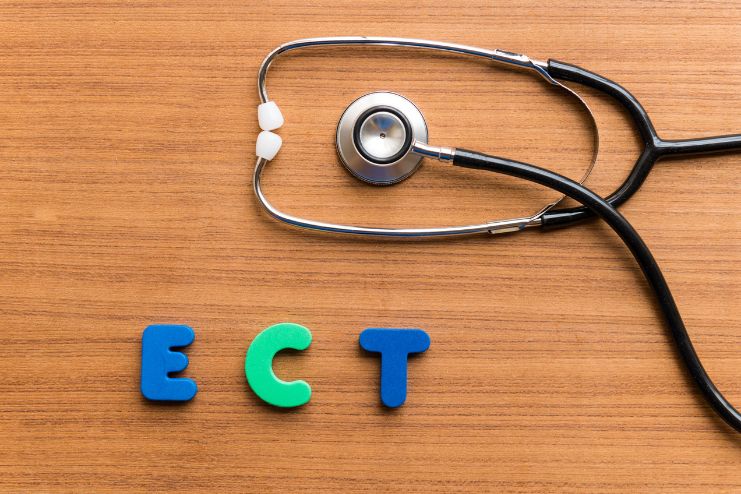Affiliate Disclaimer
Some links in this article are affiliate links. We may earn a small commission if you make a purchase through these links, at no extra cost to you. We only recommend products we find useful to our readersPost-Traumatic Stress Disorder (PTSD) is a debilitating illness that emerges following a traumatic event experienced or witnessed by an individual. Flashbacks, extreme anxiety, emotional numbing, and hyperarousal are some of the frequent symptoms, all of which can seriously interfere with daily life.
Conventional treatments for PTSD mainly include psychotherapy and medications. Unfortunately, the usual methods might not suit all individuals, and most patients are left with unwanted symptoms after being treated. That is why greater attention is being paid to unconventional therapies such as Transcranial Magnetic Stimulation (TMS), a type of non-invasive brain stimulation therapy.
However, it is crucial to determine whether TMS is a genuine breakthrough for PTSD or merely overhyped. Let’s discuss the science, advantages, disadvantages, and prospects of TMS as a treatment for PTSD.
Read More: Tapping (EFT) for Anxiety: Does It Really Work?
What is Transcranial Magnetic Stimulation (TMS)?
TMS is a procedure that does not require surgery and uses electromagnetic fields to activate nerve cells in the brain. A device with an electromagnetic coil is placed against the patient’s scalp, providing pulsed magnetic fields to certain brain regions responsible for mood and stress response.
Repetitive transcranial magnetic stimulation (rTMS), one of the forms of TMS, was initially developed as a therapy for major depressive disorder (MDD) and has FDA clearance to be used in adults who failed to respond to standard antidepressant medication. Only in recent years have researchers explored its potential to treat PTSD, anxiety disorders, and other psychiatric illnesses.
In contrast to electroconvulsive therapy (ECT), which causes seizures, TMS is less harsh on the brain, does not involve anesthesia, and tends to have fewer side effects. This makes it a desirable choice for those who want alternatives to medication or psychotherapy.
Read More: Say Goodbye to Anxiety: Transformative CBT Techniques to Regain Control
How TMS is Used for PTSD Treatment

In PTSD patients, TMS is used to target the prefrontal cortex, which is the area of the brain involved in decision-making, emotional regulation, and executive function. PTSD is linked with hyperactivity of the amygdala (the brain’s fear center) and hypoactivity of the prefrontal cortex. TMS, by stimulating the prefrontal cortex, restores equilibrium in traumatized neural circuits.
The Treatment Process
A standard TMS session involves the following steps:
- The patient is seated in an ordinary chair as a trained technician positions the TMS device on their head.
- Magnetic pulses are administered in a controlled, repetitive fashion to targeted areas of the brain.
- Sessions last 20 to 40 minutes and are held five days a week for four to six weeks.
- Patients are free to return to normal activities immediately after each session.
Unlike medications that directly alter brain chemistry, TMS modulates neuronal activity, potentially leading to long-term functional brain changes without the systemic side effects of drugs.
Read More: New Study Finds Factors That Make Us More Prone To Anxiety
The Science Behind TMS for PTSD: Does It Work?
Growing clinical research and real-world evidence support the efficacy of TMS for PTSD.
Clinical Studies and Rates of Success
Research indicates TMS can significantly decrease PTSD symptoms, especially in treatment-resistant cases. For instance:
A 2022 study in the Frontiers in Psychiatry journal discovered that individuals undergoing TMS treatment showed a significant reduction in PTSD symptoms, with some entering long-term remission.
A study published in the National Library of Medicine reports stated that high-frequency TMS (HF-TMS) to the dorsolateral prefrontal cortex (DLPFC) resulted in a meaningful decrease in PTSD-related anxiety and depression.
Another research indicated that 50-70% of the patients with PTSD who received TMS had a significant decrease in symptom severity.
Benefits of TMS for PTSD

TMS offers several advantages over traditional PTSD treatments:
- Non-Invasive and Drug-Free: Compared to drugs, which change the brain chemistry and potentially lead to dependency, TMS operates by using focused magnetic stimulation without the use of drugs.
- Minimal Side Effects: The general side effects are light headaches, dizziness, or scalp tenderness, but these tend to wear off after the initial sessions. As compared to antidepressants, TMS does not lead to weight gain, sexual disorder, or sleepiness.
- Potential for Long-Term Relief: Studies suggest that TMS can provide symptom relief that lasts for months, even after treatment ends. Some patients experience sustained benefits for up to a year.
- Effective for Treatment-Resistant PTSD: People who do not respond to traditional therapies may find TMS beneficial. It can be used in combination with psychotherapy for a comprehensive treatment approach.
Read More: How to Effectively Manage Stress During Major Life Transitions
Limitations and Risks of TMS
Although TMS has potential, it is not universally effective. Its main limitations are:
- Not Universally Effective: Some patients do not improve with TMS. Various factors may determine its results, including brain anatomy, severity of PTSD, and individual medical history.
- Side Effects: Mild side effects include headaches, scalp pain, and light dizziness. Rare risks such as seizures (very rare, but in less than 0.1% of cases) are also a possibility.
- Accessibility and Cost: The cost of treatment is usually high, as a full course can range anywhere between $6,000 to $12,000.
TMS vs. Traditional PTSD Treatments
While comparing PTSD treatment strategies, it’s important to analyze the pros and cons of varying methods. Old-school treatments such as medication and psychotherapy have been the norm for decades but are not universally effective. Some patients continue to feel symptoms even with these treatments, which has piqued the interest in the use of Transcranial Magnetic Stimulation (TMS) as an option.
Read on as we compare TMS with traditional treatments for PTSD and their differences.
1. TMS vs. Medications:

- Approach: TMS operates by modulating neural activity through magnetic pulses, whereas medications manipulate brain chemistry through an impact on neurotransmitters such as serotonin and norepinephrine.
- Effectiveness: Medications work well for some individuals, but others may develop resistance or experience breakthrough symptoms over time. TMS can be an option for those who do not respond well to medication.
- Sustainability: TMS can lead to long-term symptom relief, while medication typically requires continuous use to sustain the effects.
- Side Effects: TMS shows very few side effects (minor headaches and scalp pain), while medications may lead to drowsiness, weight gain, sexual dysfunction, and addiction.
2. TMS vs. Psychotherapy (CBT, EMDR):

- Approach: TMS specifically addresses brain function, whereas therapies such as Cognitive Behavioral Therapy (CBT) and Eye Movement Desensitization and Reprocessing (EMDR) focus on behavior and cognitive restructuring.
- Effectiveness: Therapy may be extremely effective, particularly for mild to moderate PTSD, but some find it challenging to work through trauma or benefit from therapy.
- Sustainability: TMS involves several sessions spread over weeks but does not include emotional involvement, whereas therapy involves long-term commitment and active participation.
- Combination Potential: TMS and therapy can be combined, with TMS enhancing emotional regulation and cognitive flexibility, thereby making therapy more effective.
3. TMS vs. Electroconvulsive Therapy (ECT):

- Approach: ECT and TMS are both brain stimulation procedures, but whereas ECT involves inducing seizures under anesthesia, TMS is non-invasive and does not involve the use of sedation.
- Use: ECT is generally used for the most severe, treatment-resistant forms of depression and PTSD, while TMS is more versatile and less risky.
- Side Effects: ECT carries a greater risk of memory loss, confusion, and cognitive impairment, while TMS mostly results in transient scalp discomfort.
The Future of TMS in PTSD Treatment

The future of TMS is bright as research continues to improve its uses. Improvements in personalized brain mapping are making treatments more targeted, while a combination of CBT, VR exposure therapy, and psychedelics is broadening its reach.
As we have mentioned earlier, research has indicated that early intervention using TMS might avoid the development of PTSD in susceptible groups such as first responders and victims of trauma. As innovation continues, TMS will show us some promising results over time.
Read More: Top 10 Steps To Practice Radical Acceptance For Better Version
Final Thoughts
Each of the PTSD treatment methods has advantages and disadvantages. Although medication and therapy are the most widely used treatments, TMS offers a fascinating alternative to those who haven’t benefitted from conventional treatments.
For best results, consult a mental health practitioner who’ll help you opt for the most appropriate treatment, depending on your needs.
References
- https://www.neuraliatms.com.au/tms-therapy/for-ptsd/
- https://giachicago.com/rehab-blog/tms-therapy-cost/
- https://pmc.ncbi.nlm.nih.gov/articles/PMC7839656/
- https://pmc.ncbi.nlm.nih.gov/articles/PMC8558793/
- https://www.frontiersin.org/journals/psychiatry/articles/10.3389/fpsyt.2022.701348/full
- https://pmc.ncbi.nlm.nih.gov/articles/PMC4168811/
- https://www.sciencedirect.com/science/article/pii/S0165032721011022
In this Article


















